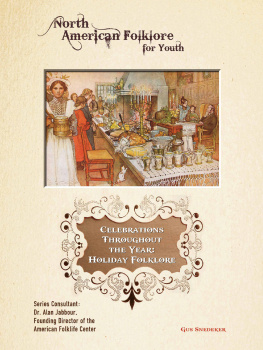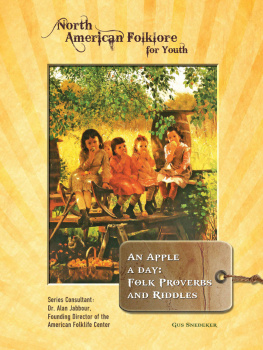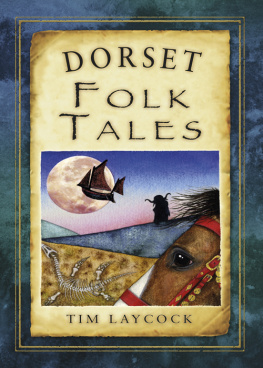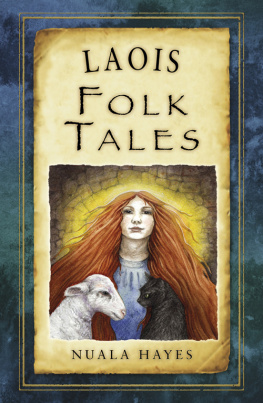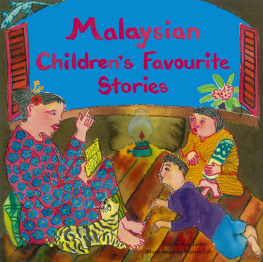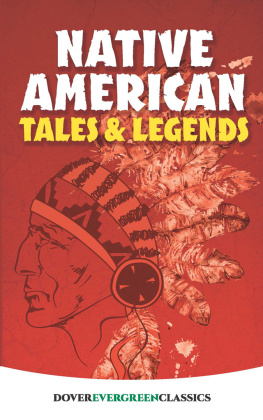Heroes, Fools, and Ghosts
Folk Tales and Legends
North American Folklore for Youth
An Apple a Day: Folk Proverbs and Riddles
And to All a Good Night: Christmas Folklore
Black Cats and White Wedding Dresses: Folk Customs
Campfire Songs, Ballads, and Lullabies: Folk Music
Celebrations Throughout the Year: Holiday Folklore
Heroes, Fools, and Ghosts: Folk Tales and Legends
Quilts, Rag Dolls, and Rocking Chairs: Folk Arts and Crafts
Sirens and Smoke: Firefighters Folklore
Tell Me a Story: Family Folklore
Youre It! Tag, Red Rover, and Other Folk Games
Heroes, Fools, and Ghosts
Folk Tales and Legends
Gus Snedeker
Mason Crest

| Mason Crest 370 Reed Road Broomall, Pennsylvania 19008 www.masoncrest.com |
Copyright 2013 by Mason Crest, an imprint of National Highlights, Inc.
All rights reserved. No part of this publication may be reproduced or transmitted in any form or by any means, electronic or mechanical, including photocopying, recording, taping, or any information storage and retrieval system, without permission from the publisher.
Printed and bound in the United States of America.
First printing
987654321
Library of Congress Cataloging-in-Publication Data
Snedeker, Gus.
Heroes, fools, and ghosts : folk tales and legends / Gus Snedeker.
p. cm.
ISBN 978-1-4222-2494-6 (hardcover) -- ISBN 978-1-4222-2486-1 (hardcover series) -- ISBN 978-1-4222-9259-4 (ebook)
1. Tales. 2. Legends. 3. Storytelling. I. Title.
GR74.S64 2013
398.2--dc23
2012012210
Produced by Harding House Publishing Services, Inc.
www.hardinghousepages.com
Cover design by Torque Advertising + Design.
Contents
W hat do a story, a joke, a fiddle tune, a quilt, a dance, a game of jacks, a holiday celebration, and a Halloween costume have in common? Not much, at first glance. But theyre all part of the stuff we call folklore.
The word folklore means the ways of thinking and acting that are learned and passed along by ordinary people. Folklore goes from grandparents to parents to childrenand on to their children. It may be passed along in words, like the urban legend we hear from friends who promise us that it really happened to someone they know. Or it may be tunes or dance steps we pick up on the block where we live. It could be the quilt our aunt made. Much of the time we learn folklore without even knowing where or how we learned it.
Folklore is not something thats far away or long ago. Its something we use and enjoy every day! It is often ordinaryand yet at the same time, it makes life seem very special. Folklore is the culture we share with others in our homes, our neighborhoods, and our places of worship. It helps tell us who we are.
Our first sense of who we are comes from our families. Family folklorelike eating certain meals together or prayers or songsgives us a sense of belonging. But as we grow older we learn to belong to other groups as well. Maybe your family is Irish. Or maybe you live in a Hispanic neighborhood in New York City. Or you might live in the country in the middle of Iowa. Maybe youre a Catholicor a Muslimor youre Jewish. Each one of these groups to which you belong will have its own folklore. A certain dance step may be African American. A story may have come from Germany. A hymn may be Protestant. A recipe may have been handed down by your Italian grandmother. All this folklore helps the people who belong to a certain group feel connected to each other.
Folklore can make each group special, different from all the others. But at the same time folklore is one of the best ways we can get to know to each other. We can learn about Vietnamese immigrants by eating Vietnamese foods. We can understand newcomers from Somalia by enjoying their music and dance. Stories, songs, and artwork move from group to group. And everyone is the richer!
Folklore isnt something you usually learn in school. Somebody, somewhere, taught you that jump-rope rhyme you knowbut you probably cant remember who taught you. You definitely didnt learn it in a schoolbook, though! You can study folklore and learn about itthats what you are doing now in this book!but folklore normally is something that just gets passed along from person to person.
This series of books explores the many kinds folklore you can find across the North American continent. As you read, youll learn something about yourselfand youll learn about your neighbors as well!

Today, we usually get our stories from books. Once upon a time, though, stories were usually told around the fire. Either way, human beings have always loved stories!
T oday, we watch the evening news to find out about whats happening in our world. But long ago people told stories to pass along news. Did you hear about what happened over the mountain? a story may have begun. Many years ago, stories werent just for fun. People needed them to communicate with each other.
Stories are powerful because they tell us about the world around us. They tell us things in a way thats easy to remember. A long time ago, our ancestors realized this was true. They also realized that some stories were more exciting than others. The best stories stuck in peoples minds.
Storytellers were important too. Storytellers were the people who told the best stories. They kept listeners interested. With just their words, they could bring the past back to life. Storytellers told about heroes from the past. They told about adventures and love. They also told useful stories. They told how people could avoid getting sick or getting hurt by a wild animal.
Believe it or not, there are some stories that are about stories! One story about stories is from Africa. It says that stories come to us from the gods.
STORYTELLERS AROUND THE WORLD
Storytellers are important wherever people live. In some African tribes, the storyteller had many jobs. It was his or her job to remember the history of the tribe. That meant keeping track of grandparents, parents, and children. It was also the storytellers job to give the leader advice.
In Ireland, in the old days, the storyteller had to study for 15 years! He had to know 250 big stories, and a hundred smaller ones. The Irish storytellers were second only to the king.
In Siberia, work is very hard. Fishermen, hunters, and woodsmen hired storytellers to help them pass the time.
The Navajo people also gave storytellers a lot of power. The Navajo storytellers told stories about how the world was first made. These stories lasted two to three days!
Spider Stories
Anansi the spider wanted the sky gods stories. But the sky god would not give them to Anansi.
Stories must be bought! What makes you think you could afford them? said the sky god.
What is the price? Anansi asked.
A black snake, a wild dog, a black cat, a swarm of hornets, and a fairy, said the sky god.
The spider smiled. I will bring all of these things. Whats more, I will throw in my own mother.
The sky god laughed at this. Ill believe it when I see it, he said.
Anansi went to his old mother for advice. His mother was older and craftier than her son. She whispered in his ear the things he should do. With her tricks, Anansi trapped the black snake, the wild dog, the black cat, and the swarm of hornets. He brought them to the sky god.

Next page

